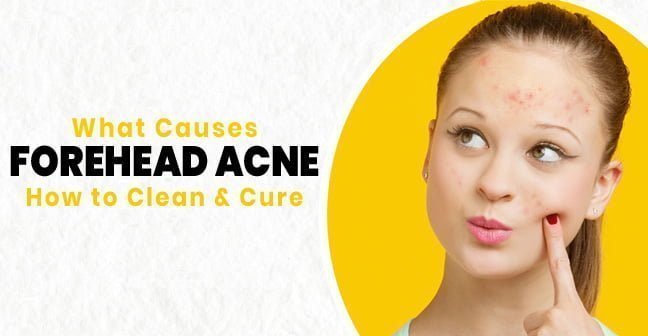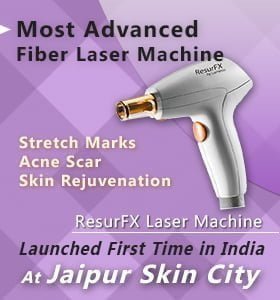Acne is a chronic, inflammatory skin condition that causes spots and pimples, especially on the face, shoulders, back, neck, chest, and upper arms. Today we’ll discuss what causes forehead acne in detail.
Whiteheads, blackheads, pimples, cysts, and nodules are all types of acne.
It commonly occurs during puberty, when the sebaceous glands activate, but it can occur at any age. It is not dangerous, but it can leave skin scars.
The glands produce oil and are stimulated by male hormones produced by the adrenal glands in both males and females.
Also Read: Acne Scar Removal By Dermaroller
What Causes Forehead Acne?
Human skin has pores that connect to oil glands under the skin. Follicles connect the glands to the pores. Follicles are small sacs that produce and secrete the liquid.
The glands produce an oily liquid called sebum. Sebum carries dead skin cells through the follicles to the surface of the skin. A small hair grows through the follicle out of the skin.
Pimples grow when these follicles get blocked, and oil builds up under the skin.
Skin cells, sebum, and hair can clump together into a plug. This plug gets infected with bacteria, and results in swelling. A pimple starts to develop when the plug begins to break down.
Propionibacterium acnes (P. acnes) is the name of the bacteria that live on the skin and contributes to the infection of pimples.
Research suggests that the severity and frequency of acne depend on the strain of bacteria. Not all acne bacteria trigger pimples. One strain helps to keep the skin pimple-free. Let’s also discuss what causes forehead acne and what are the other factors responsible for it.
Also Read: Acne Scar Treatment by Laser
Hormonal Factors
A range of factors cause acne, but the main cause is thought to be a rise in androgen levels.
Androgen is a type of hormone, the levels of which rise when adolescence begins. In women, it gets converted into estrogen.
Rising androgen levels cause the oil glands under the skin to grow. The enlarged gland produces more sebum. Excessive sebum can break down cellular walls in the pores, causing bacteria to grow.
Other Possible Triggers
Some studies suggest that genetic factors may increase the risk.
Other causes include:
- some medications that contain androgen and lithium
- greasy cosmetics
- hormonal changes
- emotional stress
- menstruation
What Are the Symptoms of Forehead Acne?
While the symptoms of acne vary in severity, you’ll notice these signs on areas of your body with the most oil glands (the face, neck, chest, back, shoulders, and upper arms): Clogged pores (pimples, blackheads, and whiteheads)
- Papules (raised lesions)
- Pustules (raised lesions with pus)
- Cysts (nodules filled with pus or fluid)
The least severe type of acne lesion is the whitehead or blackhead. This type is also the most easily treated. With more extensive acne, you may need prescription medications to ease inflammation, bacterial infection, redness, and pus.
How is the Forehead Acne Treatment Done?
Your dermatologist is the right expert to decide `your treatment plan not the beauticians of your saloon or so-called non-medical cosmetologist. The treatment aims at identifying and addressing your underlying problem if any, counseling you how to cut down the precipitating factors. It is basically a unique and customized blend of medical, laser and other latest state-of-the-art technologies delivering real and exemplary results.
The treatment is effective for people of all ages. People with all skin types can take this treatment.
The options available are as follows-
Topical Prescription Treatments
Oral medications in the combination of topical prescriptions-
Various antibiotics, retinoids, and other medicines can be required according to severity.patient may need to take the treatment for 3-4 month or even more if they are severe.
Chemical Peels and Microdermabrasion
Microdermabrasion is commonly used for skin rejuvenation and to improve the appearance of acne scars.
These cosmetic procedures may be more effective when used alongside other acne treatments.
Dermatologist in Jaipur uses special chemical peels that are not available from pharmacies. Advance peels like the salicylic peel, lactic peel or glycolic acid help drying-up of sebaceous glands and exfoliation of dead skin, thus preventing the glands from getting clogged.
Drainage and Extraction
Drainage and extraction are used to remove a large cyst, especially if the cyst has not responded to medication.
It reduces the pain and lowers risk of a scar. If the cyst has to be dealt with rapidly, the doctor may inject it with medication.
Laser and Light Therapy
Although there is no Laser available which can treat acne directly but by decreasing the activity of sebaceous glands and acne-causing bacteria this might be helpful for controlling the acne.
In case of scar formation according to severity co2 lasers or erbium fractional lasers like resurfex by lumens are helpful lasers.



